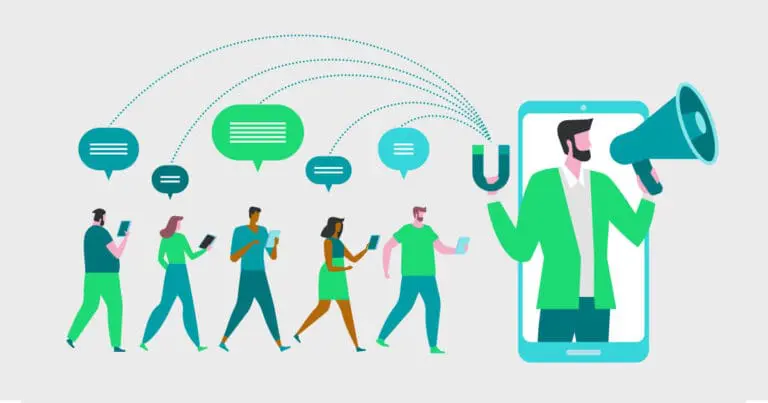The Future of Employee Benefits: 10 Trends to Watch

Employee benefits have evolved significantly over the years, adapting to the changing needs and preferences of the modern workforce.
From traditional offerings like health insurance and retirement plans to contemporary perks such as mental health resources and flexible work arrangements, the landscape of employee benefits is continuously shifting.
Staying updated with emerging trends is crucial for companies aiming to attract and retain top talent.
Keep reading for key trends shaping the future of employee benefits, providing insights into how organizations can enhance their benefits packages to meet the diverse needs of their employees.
What are employee benefits?
Employee benefits encompass a wide range of offerings provided by employers to enhance the overall employee experience and well-being. Traditionally, these benefits included health insurance, retirement savings plans, and paid time off.
However, the modern workplace demands more personalized and diverse benefits to address the unique needs of today’s workforce.
Newer benefits like financial wellness programs, mental health services, and flexible work schedules are becoming increasingly important in creating a positive work environment and ensuring employee satisfaction.
Top employee benefits for the future
- Personalized employee benefits packages
- Mental health and well-being programs
- Financial wellness programs
- Remote, hybrid, and onsite work employee benefits
- Health and wellness employee benefits
- Learning and development opportunities
- Family-friendly employee benefits
- Diversity, equity, and inclusion (DEI) initiatives
- Improved healthcare affordability
- Environmental and sustainability employee benefits
1. Personalized employee benefits packages
Personalized benefits packages are becoming essential as employees seek options that cater to their individual needs and preferences.
Savvy employers can leverage technology and data analytics to offer personalized benefits, ensuring that each employee receives a benefits package that aligns with their personal lives and professional goals.
2. Mental health and well-being programs
The focus on mental health and well-being in the workplace is intensifying, with companies adopting various programs to support their employees.
Initiatives like employee assistance programs, counseling services, and mindfulness workshops are becoming standard offerings.
Investing in mental health benefits not only enhances employee well-being but also boosts productivity and reduces turnover, leading to a more motivated workforce.
3. Financial wellness programs
Financial wellness programs are increasingly important as employees face economic challenges and seek financial stability.
Benefits such as student loan repayment assistance, financial planning services, and emergency savings funds help employees manage their financial burdens and achieve their financial goals.
For employers, these programs reduce financial stress among employees, fostering loyalty and job satisfaction.
4. Remote, hybrid, and onsite work employee benefits
The shift to remote and hybrid work models has transformed benefits offerings.
Essential remote work benefits include home office stipends, internet allowances, and flexible schedules.
Companies must address the unique challenges of providing benefits to remote, onsite, and hybrid employees, ensuring that all workers feel supported regardless of their work arrangement.
5. Health and wellness employee benefits
Innovations in health and wellness benefits are enhancing the physical health of employees.
Examples include telehealth services, wellness challenges, and fitness reimbursements.
These benefits contribute to a healthy workforce, promoting employee engagement and reducing healthcare costs for both employees and employers.
6. Learning and development opportunities
Continuous learning and upskilling are critical in today’s dynamic job market.
Offering professional development opportunities like tuition reimbursement, online courses, and certification programs helps employees grow and succeed.
These benefits not only enhance employee morale but also drive organizational success by fostering a culture of learning and innovation.
7. Family-friendly employee benefits
Supporting employees with family responsibilities is essential for creating a positive work environment.
Family-friendly benefits such as maternity and parental leave, childcare assistance, and flexible work options improve employee satisfaction and retention.
These benefits demonstrate an employer’s commitment to work-life balance initiatives, helping employees manage their personal and professional lives effectively.
8. Diversity, equity, and inclusion (DEI) initiatives
DEI initiatives are reshaping the design of employee benefits to ensure inclusivity and support for all employees.
Examples of DEI-focused benefits include inclusive healthcare coverage, support groups, and diversity training programs.
Prioritizing DEI in benefits offerings leads to positive outcomes such as enhanced employee engagement, improved morale, and a more inclusive workplace culture.
9. Improved healthcare affordability
Technology plays a crucial role in streamlining benefits administration and delivery, making healthcare more affordable and accessible.
Innovative benefits platforms and tools simplify the management of benefits, reducing administrative burdens and healthcare costs.
These advancements benefit both employers and employees, enhancing the overall efficiency of benefits plans.
10. Environmental and sustainability employee benefits
As awareness of environmental sustainability grows, companies are incorporating green benefits into their offerings.
Eco-friendly commuting options, sustainability incentives, and green wellness programs align with corporate social responsibility (CSR) goals.
These benefits appeal to employees who prioritize environmental issues, contributing to a more engaged and conscientious workforce.
Emerging employee benefit trends
The future of employee benefits is shaped by various emerging trends, from personalized packages and mental health programs to financial wellness and sustainability initiatives.
Staying ahead of the curve is essential for companies aiming to offer competitive and attractive benefits packages.
By continuously evaluating and adapting their benefits offerings, organizations can meet the evolving needs of their employees, fostering a modern workforce that is healthy, engaged, and satisfied.
Looking to hire top-tier Tech, Digital Marketing, or Creative Talent? We can help.
Every year, Mondo helps to fill over 2,000 open positions nationwide.
More Reading…
- Preparing for Gen Alpha: the Next Generation of Workers
- Why Is Diversity in Leadership Important? Top Benefits & Strategies
- CrowdStrike Outage Highlights Importance of Incident Response Planning
- How to Attract Top Talent with a Strong Employer Brand
- How to Measure and Improve Remote Employee Productivity
- 12 Strategies for Managing a Global Workforce
- How To Use Predictive Analytics to Forecast Hiring Needs
- Top Marketing Automation Tools and How to Leverage for Your Business
- The Impact of AI on Human Resources: Opportunities and Challenges
- 7 Benefits of Cross-Training Employees: Examples & Best Practices
- How to Build A Successful AI Team in Your Organization



